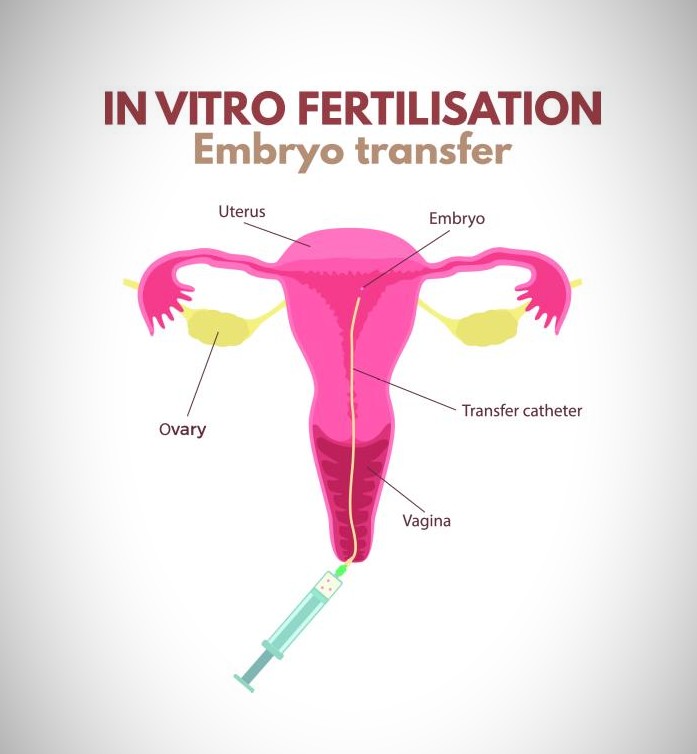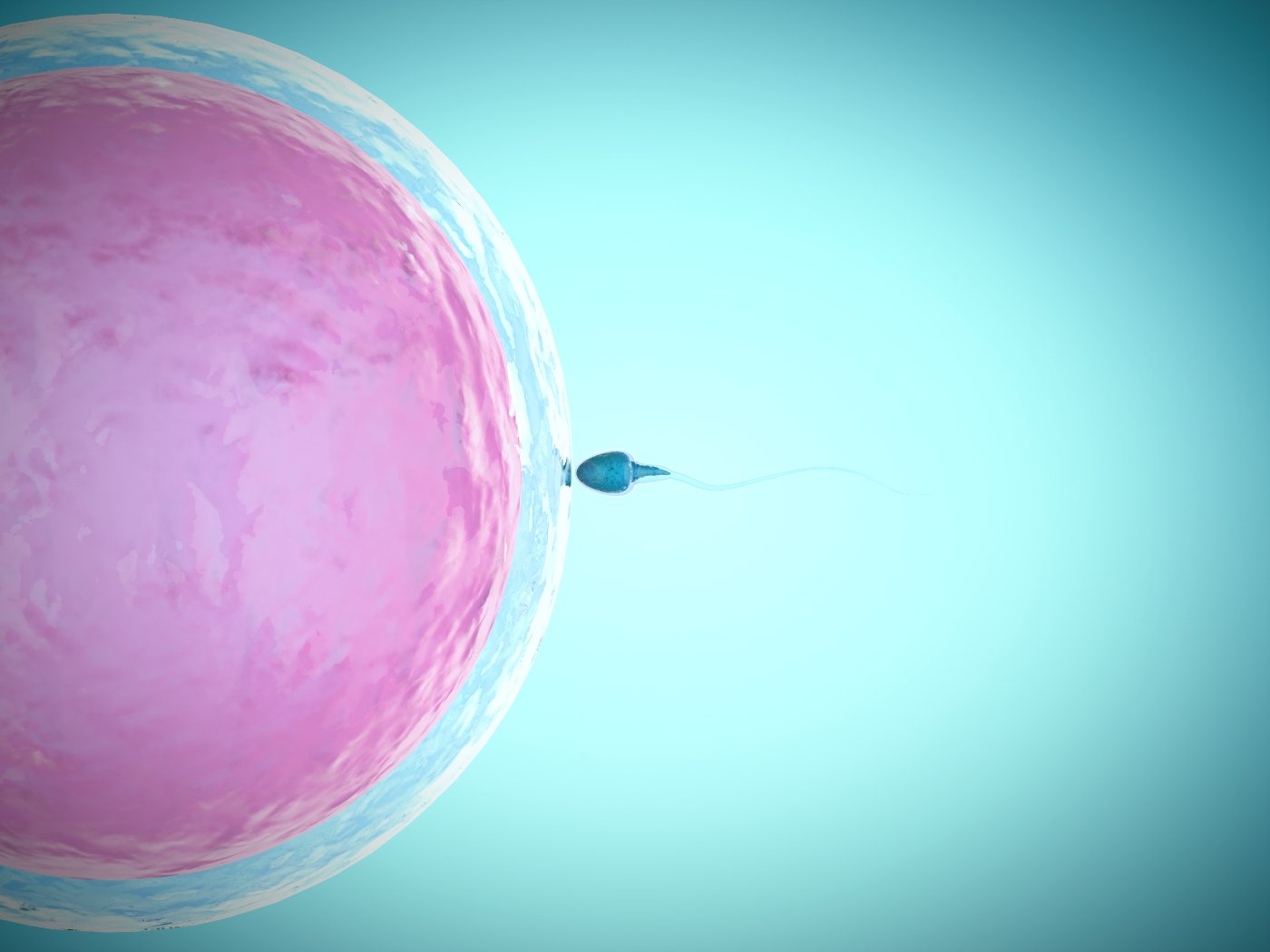To start thinking of IVF treatment you first need to rule out other options like different infertility treatments or change your lifestyle to a healthier one. You should start with seeing your general practitioner (family doctor) who will check your medical history and examine you physically. He will then probably recommend some tests to be done and suggest some lifestyle changes. The general practitioner can also refer you to a specialist in a hospital or a fertility clinic.
Before they consider that you undergo in vitro fertilization they first have to do simple tests and treatments. Then if the specialist indicates that you can go through with the IVF treatment he will refer you to a suitable conception unit but remember to not be hasty, go home and think things through.
A step by step guide for IVF process
In Vitro Fertilization is a procedure that helped thousands of couples all over the world to have a baby. It is a procedure involving combining the egg and sperm in an embryology laboratory creating an embryo that then can be placed in the woman’s uterus.
We live in a world where almost everyone has heard about IVF but most people do not really know how the procedure really looks like. We will take you through the whole process of IVF step by step.
You might be interested in: The Good, The Bad And The Baby Maker – Embryo Quality – Grading Systems
IVF Consultation
On the scheduled consultation you will have an appointment with a personal fertility specialist. He will want to know all about your and your partner’s medical history and you will need appropriate documents for that (you will be said what is needed before the consultation so do not worry). The specialist will talk you through the whole process and you should get a plan with dates and timelines. Remember to plan your time ahead in connection with your work and other responsibilities.
You will be also starting to prepare for ovarian stimulation by taking birth control. Taking birth control can reduce the chances of cysts to form that could interfere at the beginning of the cycle. It also helps with synchronizing the egg follicles and allows better control of the timing of the cycle.
The testing of ovarian reserve performed on Day 2/3, including FSH and E2 levels, should be used for determining an age-adjusted initial stimulation protocol and not to exclude treatment.
Source: Best practices of ASRM and ESHRE: a journey through reproductive medicine
IVF Stimulation
This step is mostly all about ovarian stimulation and a bit about monitoring. One egg a month usually matures in a normal, natural ovulating cycle and the point of an IVF cycle is to have as many matured eggs as possible. More matured eggs increase your chances of a successful in vitro treatment. That is why ovarian stimulation is done.
The patient is injected with medication for about 7 to 10 days. This medication stimulates the ovaries so that they start producing eggs. While undergoing this medication treatment you will need to visit the clinic about 7 or 8 times for the morning monitoring tests. Those tests are the transvaginal ultrasound for measurements of the egg follicles growth and the uterine lining thickness as well as bloodwork to measure your estrogen level.
After each monitoring, you should receive a phone call from the clinic about your treatment’s progress and all the information you need for taking further action.
Egg retrieval
The female patient lays in a lithotomy position and is under sedation, general anaesthesia and a paracervical block. Using the ultrasound the doctor very carefully – not to injure any organs inserts a needle into the ovarian follicle. A suction device is placed at the other end of the needle which gently draws follicle fluids with the cellular material and the oocyte (if it all goes well of course).
Then this material is given to the IVF laboratory’s technician who identifies and quantifies the ova. This is followed by aspirating other follicles and then the needle is withdrawn from the first ovary and put into the second ovary and the same is done. Then the needle is withdrawn, there could be a little bleeding involved but that will heal very fast and it is not a problem.
Fertilisation and embryo development
After retrieving the eggs the embryologists start the fertilization process which can be done in two ways:
The conventional fertilization – healthy sperm is isolated and exposed to the eggs in the laboratory and the fertilization happens in a natural way;
Intracytoplasmic Sperm Injection (ICSI) – This method is used when the quality and quantity of the sperm is too low and cannot effectively penetrate the egg.
The quality of the sperm is the basis of making the decision between conventional fertilization and Intracytoplasmic Sperm Injection. Standard tests are done to know about sperm quality.
Embryo transfer
A simple and quick procedure that does not involve anaesthesia or recovery time. On the morning of the transfer, the embryologist will make a final evaluation of the embryos and you will be recommended the number of embryos to be transferred. This recommendation is dependent on the quality and age of the embryos. Additionally, other aspects of your case like the history of previous treatments and your age also have an impact on the final recommendation. Often a patient will be recommended a single embryo transfer if the chances or similar to a case with multiple embryos which reduces the risk of multi birth.

When you and your physician decide on the number of embryos to be transferred then the transfer catheter is loaded with the chosen amount of embryos. Finally, the transfer starts during which the catheter is inserted and the embryo is pushed into the uterus. When the transfer is completed the catheter is removed. At the end of the transfer, the embryologist will check if the embryo was released and you will get instructions on what lays ahead next.
One of the most significant decisions while doing the IVF treatment is to decide when to make the embryo transfer to the uterus. While undergoing IVF there are two important stages of development in which the embryos can be transferred into the uterus.
- The cleavage stage: Which is on the third day of the embryo’s life – it is usually called the “day 3 transfer”
- The blastocyst stage: This is the fifth day of the embryo’s life and is usually called the “day 5 transfer”
Day 3 or Day 5 embryo transfer
Most IVF clinics transfer embryos in the blastocyst stage on day 5 or 6. Sometimes the decisions on the stage may be different depending on the patient’s individual situation.
The most significant benefit of doing the transfer on the blastocyst stage is the fact you can choose the strongest embryos which are more like to implant and as a result get pregnant.
Waiting for the embryo to develop to the blastocyst stage is a kind of selection itself. In fact, some embryos which are of poor quality or have genetic abnormalities or disorders have a lower chance to survive 5 days to become a blastocyst. This means that in a way the low-quality embryos eliminate themselves leaving you to select among the strongest. Studies show that women which produce many embryos can benefit from doing “day 5 transfer”. Those of the patients which responded well to the medication and had multiple embryos had higher pregnancy rates. However among the older women and women who produced lower amounts of eggs or embryos these benefits were not visible. In the case of these women, there are no obvious benefits of doing a day 5 embryo transfer over a day 3 transfer.
Pregnancy after IVF
18 days after the egg retrieval a pregnancy test is done – if the hCG level is over 100 it means it is positive (but do not get scared a lot of pregnancies start with the hCG level below 100). The test is repeated after two or three days to confirm if the pregnancy is really a success or not. The hCG level should double every two days. If the second test comes out positive a third and last test is done to be 100% sure and there will be an ultrasound scheduled for about 6 weeks ahead. Till this time the physician will look for a heartbeat to confirm the pregnancy.
IVF process
There is a bunch of things you have to decide on when deciding to go through with the IVF treatment. A lot of those things depend deeply on money of course and time. If you have plenty of both (although you really never have too much time when it comes to treating infertility) you should take your time and choose the best clinic in the world you can find and make your chances greater.
If your funds have limitations you will have to be a lot smarter and do a bit of investigating. You have to decide whether you want the clinic to be abroad or local. In some countries, IVF treatments are significantly more expensive than in others which makes people decide on IVF treatment abroad. This is of course associated with different additional costs for travel and accommodation.
Anyway, whether you choose a clinic abroad or local you need to draw up a ‘worst-case scenario list of expenses’ so there is no way you will be caught off guard and be surprised. You have to keep in mind that it could turn out that the first treatment failed so be ready physically, emotionally and financially if you want to give it another try.
If you have the need to then talk with your family and friends about your plans for support, talking always helps. You can also find couples who have been going through the whole IVF process and take some advice from their experience.




